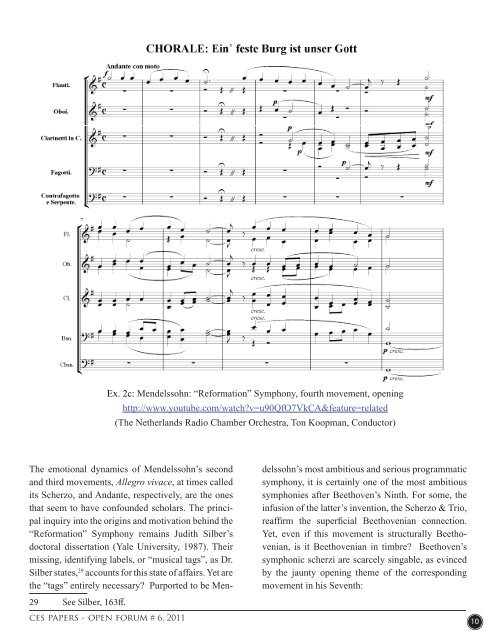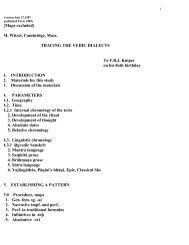references - people.fas.harvard.edu - Harvard University
references - people.fas.harvard.edu - Harvard University
references - people.fas.harvard.edu - Harvard University
You also want an ePaper? Increase the reach of your titles
YUMPU automatically turns print PDFs into web optimized ePapers that Google loves.
The emotional dynamics of Mendelssohn’s second<br />
and third movements, Allegro vivace, at times called<br />
its Scherzo, and Andante, respectively, are the ones<br />
that seem to have confounded scholars. The principal<br />
inquiry into the origins and motivation behind the<br />
“Reformation” Symphony remains Judith Silber’s<br />
doctoral dissertation (Yale <strong>University</strong>, 1987). Their<br />
missing, identifying labels, or “musical tags”, as Dr.<br />
Silber states, 29 accounts for this state of affairs. Yet are<br />
the “tags” entirely necessary? Purported to be Men-<br />
29 See Silber, 163ff .<br />
Ex. 2c: Mendelssohn: “Reformation” Symphony, fourth movement, opening<br />
ces papers - open forum # 6, 2011<br />
http://www.youtube.com/watch?v=u90QfO7VkCA&feature=related<br />
(The Netherlands Radio Chamber Orchestra, Ton Koopman, Conductor)<br />
delssohn’s most ambitious and serious programmatic<br />
symphony, it is certainly one of the most ambitious<br />
symphonies after Beethoven’s Ninth. For some, the<br />
infusion of the latter’s invention, the Scherzo & Trio,<br />
reaffi rm the superfi cial Beethovenian connection.<br />
Yet, even if this movement is structurally Beethovenian,<br />
is it Beethovenian in timbre? Beethoven’s<br />
symphonic scherzi are scarcely singable, as evinced<br />
by the jaunty opening theme of the corresponding<br />
movement in his Seventh:<br />
�<br />
10

















